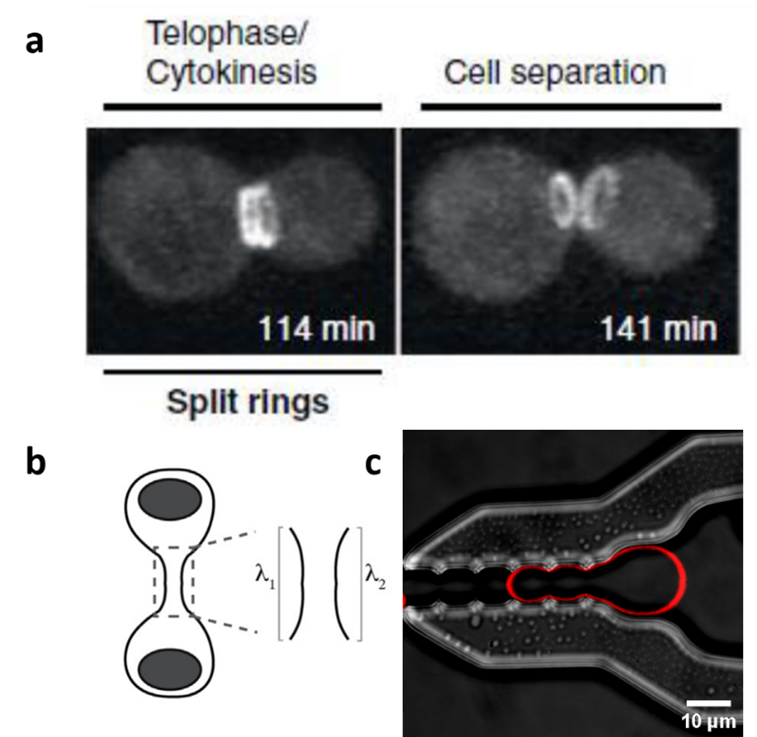Development of a microfluidic device to study synthetic cell division (BEP/MEP)
Description
The physical process of cell division, or cytokinesis, is the mechanism by which a parent cell divides into two daughter cells. In mammalian cells, sister chromatids segregate towards the opposing spindle poles during the anaphase. This step is followed by the formation of a ring, composed of cytoskeletal proteins, at the cell midplane. Contraction of this ring induces furrowing of the plasma membrane and will eventually lead to cell division. Before actual division occurs, the cell elongates and forms an intercellular bridge between both daughter cells. Numerous proteins are recruited to the intercellular bridge, and, due to its complex structure and molecular interactions, this step of cell division is still poorly understood on a molecular basis.
In our groups (Koenderink and Cees Dekker groups), we use cell-sized giant unilamellar vesicles (GUVs) as a minimalistic model system to study the mechanism by which cytoskeletal proteins interact with biomimetic cell membranes and how they direct fundamental processes such as cell division.
Recent advances in the field of microfluidics led to the development of methods to produce and trap GUVs within a single device. Furthermore, by designing microfluidic traps of different geometries, GUV membranes can be re-shaped and their curvature can be controlled from the nano- to microscale. In this project you will employ this cutting-edge technology to study the effects of membrane curvature on cytoskeletal proteins present in the intercellular bridge. More specific, as a BEP/MEP student you will have the opportunity to get involved in the development and optimization of the microfluidic device, the production of synthetic cells (GUVs) using a method known as emulsion droplet interface crossing encapsulation (eDICE), and the quantitative image analysis of protein-membrane interactions within the GUVs using scanning laser confocal microscopy.
Contact
Bert Van Herck (B.VanHerck@tudelft.nl), SaFyre Mx Reese (S.D.R.MxReese@tudelft.nl), and Prof. Dr. Gijsje Koenderink (G.H.Koenderink@tudelft.nl)
